13 Things You Do That Your Cat Actually Hates
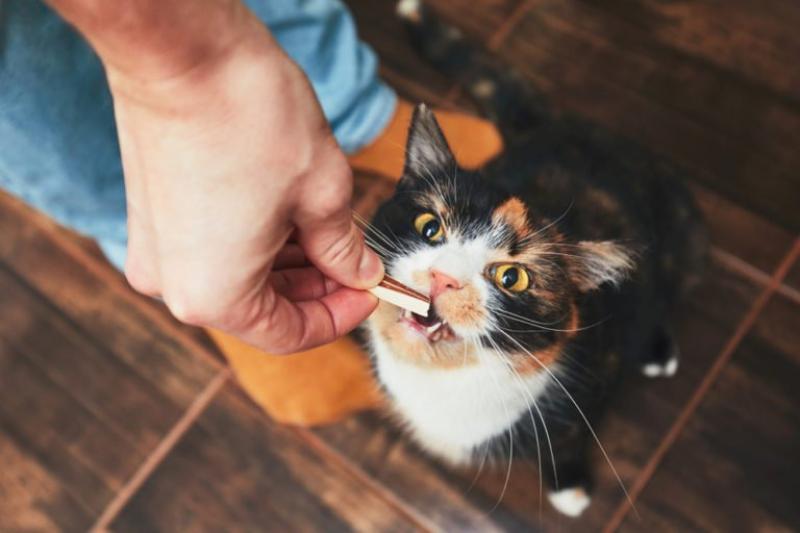


Do you really think your kitty likes being picked up by your toddler nephew? Experts explain which human behaviors irritate our cats most.
Tummy rubs
 Kutikova Ekaterina/Shutterstock
Kutikova Ekaterina/Shutterstock
Petting on the belly is generally not welcomed: “Most cats don’t like to be stroked on their tummies,” says animal behavior researcher Dennis C. Turner, who edited what’s considered the “cat bible,” The Domestic Cat: The Biology of its Behaviour . How can you tell? “They will (try to) depart the scene or hit you with one of the front paws (with claws extended!),” he says, or they might bite (Turner emphasizes that cat bites need to be thoroughly disinfected). Then again, different cats have different preferences, says Kristyn Vitale , a postdoctoral researcher at Oregon State University, in the Human-Animal Interaction Lab . “Other cats love when a person pets their belly.” Just be ready to back off if the cat gets annoyed. Here are 17 things you never knew about cats .
Interacting with strangers
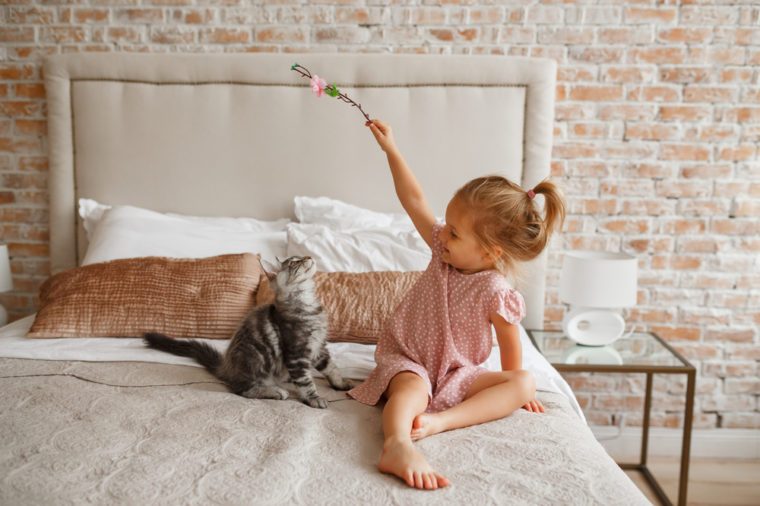 PhotoSunny/Shutterstock
PhotoSunny/Shutterstock
Paying attention to your cat’s reactions is also important when an unfamiliar person wants to pet him—especially if that person is a child or someone who hasn’t spent much time around cats. “One way to see if the cat is amicable to being pet after just meeting them is to let the cat sniff your hand and then watch how they behave,” Vitale says. “If they want to interact they will most likely approach you and engage in social behavior after sniffing you, such as rubbing on you or trying to sit with you.” She adds that if they don’t want to interact, they’ll usually walk away or ignore you, in which case it’s best to let them have their space.
Being picked up
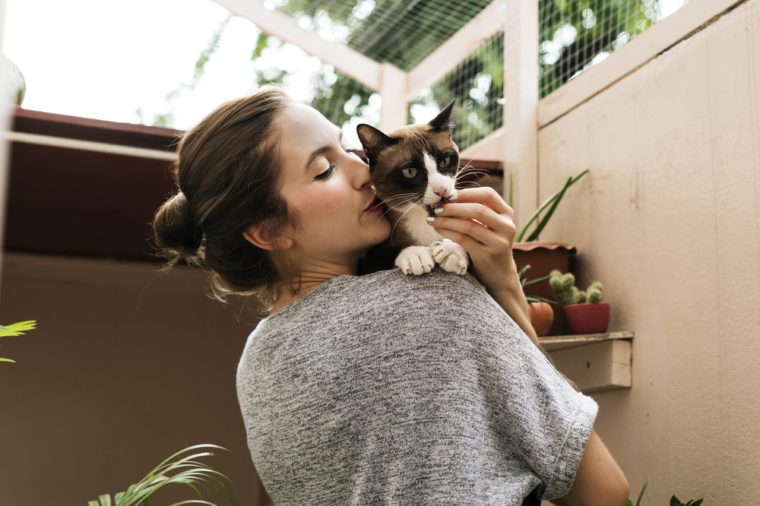 Rawpixel.com/Shutterstock
Rawpixel.com/Shutterstock
“They certainly don’t like being held against their will,” Turner says. He adds that most cats will forgive you for coming on too strong from time to time if they’re used to socializing with people and they trust you: “My research has shown that they accept most advances by their keepers, giving us the impression that we are in charge.” But, he adds, for the sake of your long-term human-cat relationship, it’s always better to wait until the cat comes to you for attention. “Then there’s more time interacting in the relationship.”
Having their tails held
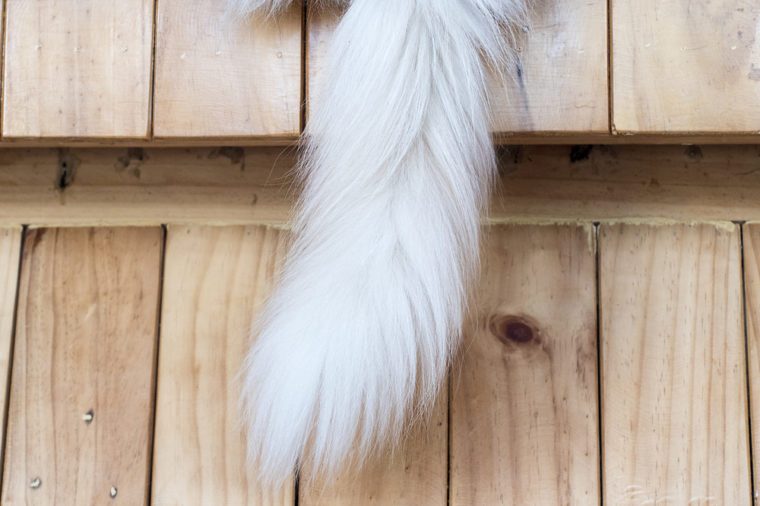 sweeth2o/Shutterstock
sweeth2o/Shutterstock
For little kids, a cat’s tail can look like a very tempting handhold—but don’t let them grab it! Turner says cats really dislike having their tails held or pulled. Instead, show the child how to let the cat sniff his or her hand, and if all goes well, to pet them in their favorite places: “If they’ve been socialized to people as kittens, then they usually like being tickled around their necks or stroked down the back,” Turner says. Make sure kids are watching for signs that the cat is unhappy, says Vitale: “If a cat does not like the interaction they are receiving, the cat may have dilated pupils, a rapid, fast twitching tail, ears that are flat against their head, fur that stands up on its ends, and may make hiss or growl vocalizations.” Read about 50 things that make your pet tick .
Being left alone
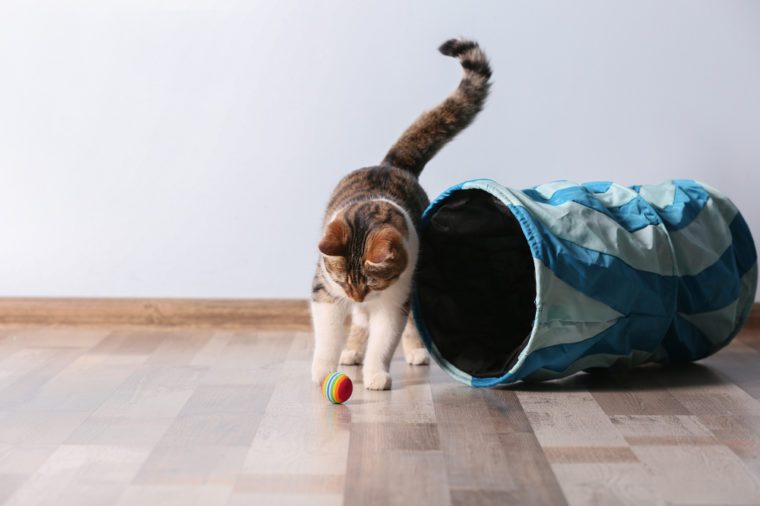 Africa Studio/Shutterstock
Africa Studio/Shutterstock
Dogs aren’t the only pets that get lonely and bored when you spend the whole day at work. Vitale advises cat owners to give their pets food puzzles when they’re alone—they’ll be too busy solving problems for snacks to miss you much. She also recommends providing a variety of toys and a protected outdoor space (sometimes known as a catio or a window perch). Some people even consider a second cat. “Although not all cats will do well with another cat, many will readily accept a companion given a proper introduction,” Vitale says. “A new owner could also consider adopting sibling kittens or cats, which may already have a well-established social relationship.”
Not enough litter boxes
 Africa Studio/Shutterstock
Africa Studio/Shutterstock
Is your kitty doing her business in the wrong spots? It could just be that she feels there’s not enough of her smell around your house. Vitale suggests having more litter boxes: “Cats are typically more relaxed and secure in areas that have their scent,” she says. “Usually, the rule is you want at least one litter box per cat plus an extra, although some cats may need more than this.” She says to spread the boxes around the house, and she advises choosing unscented cat litter and cleaning the boxes with unscented products, so no chemical smells keep your cat from being able to adequately detect her own fragrance. Avoid making these 12 dangerous cat-owner mistakes .
Cat carriers
 Natalia Fedosova/Shutterstock
Natalia Fedosova/Shutterstock
It’s no news flash that most cats hate going into a carrier. But it’s not the box itself that’s the problem—it’s the veterinarian they usually have to visit when they get closed up in there. Vitale says that, with some work, you can change their negative associations with more positive ones. For starters, “leave the carrier out with a blanket inside so the cat can explore the carrier and even sit in it at times where the cat is just relaxing at home,” she says. You can put treats and catnip inside too. Once he ventures in there on his own, praise him and give him more treats. If he gets comfortable, try shutting the door for a minute—and then opening it and dispensing even more goodies.
Riding in cars
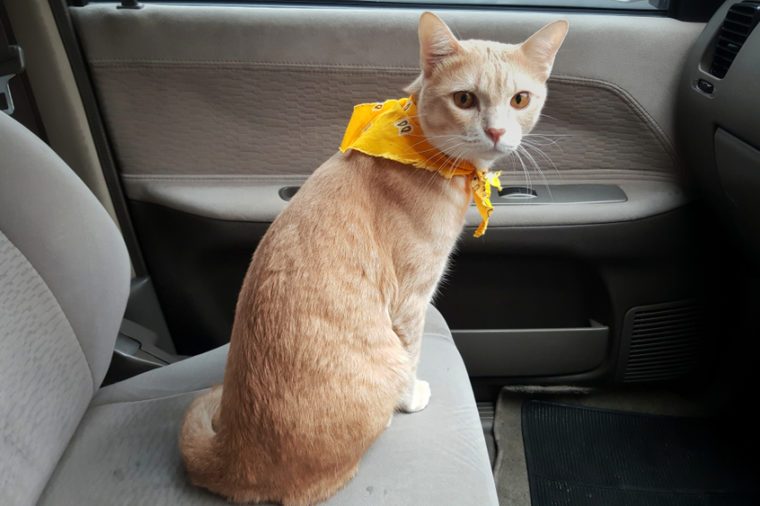 RJ22/Shutterstock
RJ22/Shutterstock
Carriers and car rides usually go together, but the good news is that some cats can be desensitized to cars too. “One thing owners can do is to take their cat for rides around the neighborhood, while praising the cat for doing a good job,” Vitale says. She suggests keeping it very short at first (maybe five minutes) and—yes—giving lots of treats, petting and play (whatever your cat loves most) when you get home. If your cat seems to be getting more comfortable, make the rides a little longer.
Other cats
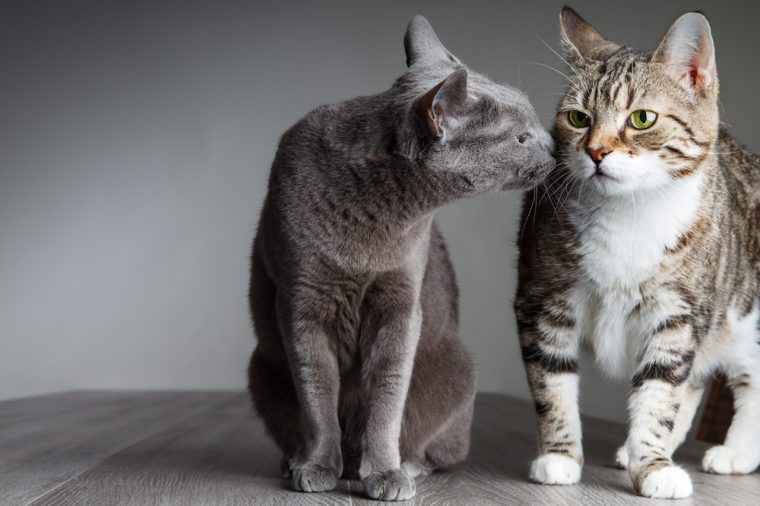 Nailia Schwarz/Shutterstock
Nailia Schwarz/Shutterstock
Lots of cats love having cat companions, but if yours doesn’t, she might act out by showing fear or aggression. This doesn’t necessarily mean you have to give one up! “Cats show great flexibility in their social behavior,” Vitale says. She suggests separating the cats into different areas of the house and slowly reintroducing them to one another using a method called “Scent, Sight, Touch”:
- Take a toy or blanket from each cat and swap them. Give each cat the other cat’s scent item along with lots of praise and rewards so they associate the smell with good things.
- After doing this a few times, set up a space where the cats will be able to see one another through a physical barrier, like a screen door or gate. Then feed them, so they start to associate positive feelings (food) with the sight of the other cat.
- After a few successful feeding sessions, you can try to introduce the cats without a barrier—distract each cat with toys during their first meeting in the same room, so they have less time to worry.
“If owners go slow and give lots of rewards, many cats can learn to accept a companion cat,” Vitale says.
Baths
 Dmitry Galaganov/Shutterstock
Dmitry Galaganov/Shutterstock
Yes, obviously, domestic cats hate baths. (Tigers and jaguars, on the other hand, have been known to enjoy a leisurely soak, according to Catster magazine.) The good news is that they don’t usually need to be bathed—regular brushing is enough to remove detached fur and shake out loose dirt. If, however, your kitty rolls around in something noxious that really needs to be removed with soap and water, it’s not likely to be a fun process for anybody, so you want to make it as quick as possible, Catster says. Have everything ready and nearby (cat-specific shampoo, towels, a washcloth for his head, and a pitcher if you don’t have a handheld spray nozzle on your kitchen sink) and wear long rubber gloves to protect yourself from any outbursts. When the deed is done, get your cat as dry as you can with a towel; only use a hair dryer (low heat) if he’s not afraid of it. Check out these 15 hilarious cat memes that are funnier than a mad, wet cat.
Medication
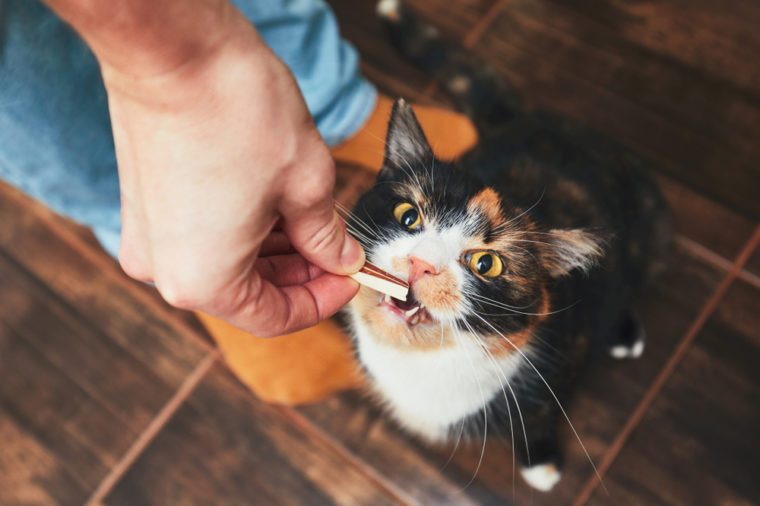 Jaromir Chalabala/Shutterstock
Jaromir Chalabala/Shutterstock
None of us like taking our pills. To make the process easier, the Lincoln, Nebraska, All Feline Hospital suggests wrapping your cat’s meds inside a piece of cheese or lunchmeat, or in a commercial “pill pocket.” It might work if she’s not a big chewer and really loves the treat. Otherwise, you can grind up the pill and mix it in with whatever food your cat likes most—the trick is that the cat has to eat it all, or she won’t get all the medicine. If your cat sees through these deceptions and refuses to take her medicine, you’ll have to place the pill into her mouth and somehow convince her to swallow it—see detailed instructions for a variety of methods. Keep in mind that if you administer the pill by hand, it might get stuck in the esophagus for a while before making its way to the stomach, which you can usually avoid by squeezing a syringe of water or broth into your cat’s mouth after the pill.
Old food
 garetsworkshop/Shutterstock
garetsworkshop/Shutterstock
Lots of cats will turn their noses up at food that’s been sitting out all day while you’re at work. Small, frequent meals throughout the day actually matches their natural feeding behavior more closely, so if you’re able to fill their dishes just a little several times rather than free-feeding a full bowl, Vitale recommends it: “This also gives the cat an event during the day to look forward to, which may help alleviate behavioral issues.” If you won’t be home to dispense multiple meals, Vitale again recommends food puzzles. “This would allow the cat to get the food out at their own pace, give them enrichment to focus on while alone, and help food from sitting out too long,” she says.
Dog visitors
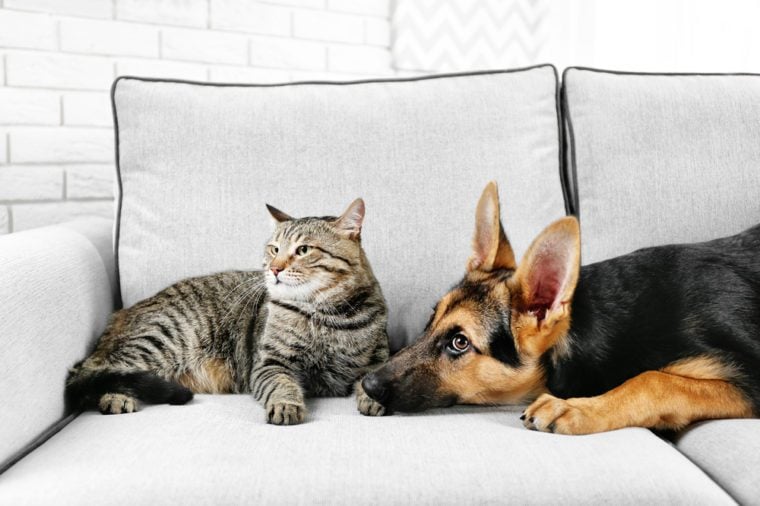 Africa Studio/Shutterstock
Africa Studio/Shutterstock
Dogs can be as scary (or scarier) than kids, and Vitale suggests introducing your cat to both in more-or-less the same manner: “Always allow cats to sniff, then see the dog or child before physical interactions occur.” Make sure, too, that your cat has a safe, accessible place to hide if he’s just not interested in participating. Next, read on for these 21 cat adoption photos that will melt your heart.



I have never had a cat, but I know many NT people do.
I'll put that at the bottom of my list.